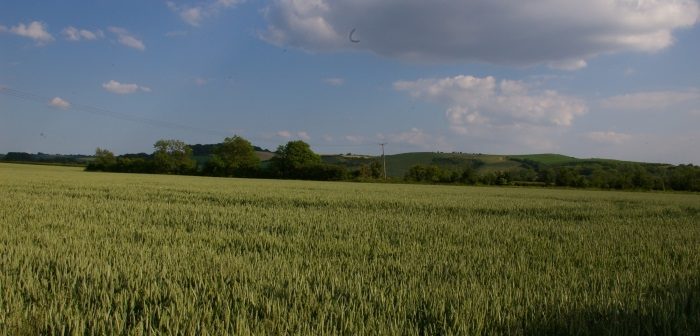With an estimated 12 million loaves sold in the UK every day, bread remains a staple of the British diet. In a groundbreaking study researchers from the University of Sheffield have now calculated the environmental impact of a loaf of bread and which part of its production contributes the most greenhouse gas.
The group of interdisciplinary researchers from the University’s Grantham Centre for Sustainable Futures, analysed the complete process from growing and harvesting the wheat; milling the grain; producing the flour; baking the bread and the production of the final product, ready to be sold by retailers.
The findings, published in the journal Nature Plants, show ammonium nitrate fertiliser used in wheat cultivation contributes almost half (43 per cent) of the greenhouse gas emissions – dwarfing all other processes in the supply chain.
Dr Liam Goucher, N8 Agrifood Research Fellow from the University of Sheffield who carried out the study, said: “Consumers are usually unaware of the environmental impacts embodied in the products they purchase – particularly in the case of food, where the main concerns are usually over health or animal welfare.
“There is perhaps awareness of pollution caused by plastic packaging, but many people will be surprised at the wider environmental impacts revealed in this study.
“We found in every loaf there is embodied global warming resulting from the fertiliser applied to farmers’ fields to increase their wheat harvest. This arises from the large amount of energy needed to make the fertilizer and from nitrous oxide gas released when it is degraded in the soil.”
How to produce sufficient healthy and affordable food for the world’s growing and more demanding population, whilst protecting the environment is one of the biggest challenges of the 21st century.
It is estimated that up to 60 per cent of agricultural crops are now grown with the use of fertilisers. Although they can dramatically boast the growth of plants and vegetables – assisting the growing demand of food yields – fertilisers consist of substances and chemicals such as methane, carbon dioxide, ammonia and nitrogen. The emissions from these substances in synthetic fertilisers contribute to greenhouse gases.
Professor Peter Horton FRS, Chief Research Advisor to the Grantham Centre for Sustainable Futures at the University of Sheffield and corresponding author of the paper, said: “Our findings bring into focus a key part of the food security challenge – resolving the major conflicts embedded in the agri-food system, whose primary purpose is to make money not to provide sustainable global food security.
“High agricultural productivity – necessary for profit for farmers, agri-businesses and food retailers, whilst also keeping prices low for consumers – currently requires high levels of application of relatively cheap fertilisers.”
He added: “With over 100 million tonnes of fertiliser used globally each year to support agricultural production this is a massive problem, but environmental impact is not costed within the system and so there are currently no real incentives to reduce our reliance on fertiliser.
“How to achieve sustainable global food security is not only a technical question but a political economic one, and requires interdisciplinary research of the kind we do here at Sheffield.”
The study was made possible by a pioneering collaboration with the agricultural and food manufacturing sector developed by Richard Bruce, a co-author of the paper and Business Engagement Lead for the Grantham Centre for Sustainable Futures at the University of Sheffield.
The data analysed in the study was processed using an advanced life-cycle assessment tool – SCEnAT – developed by Professor Lenny Koh, Director of the Advanced Resource Efficiency Centre at the University’s Management School and co-author of the paper.
“This tool handles large and complex data sets and yielding data on the environmental impact, including greenhouse gas emissions of all the stages in the supply chain,” said Professor Koh.
“The tool identifies the processes that yield the most impact – the hotspots.
“The findings raise a very important issue – whose responsibility is it to bring about the implementation of these interventions: the fertiliser manufacturer, the farmer, the retailer or the consumer?
“There is a growing recognition for a range of industrial processes of the notion of extended producer responsibility – the producer being responsible for downstream impact, expanded to the idea of shared producer and consumer responsibility. The consumer is key, whether being persuaded to pay more for a greener product or by applying pressure for a change in practice.”
The paper also highlights the solutions available which could potentially reduce these impacts in the future.
Co-author Professor Duncan Cameron, Co-director of the P3 Centre for Translational Plant and Soil Science explains: “The fertiliser problem is solvable – through improved agronomic practices”.




